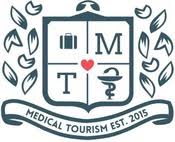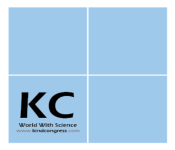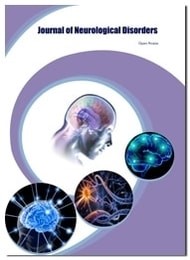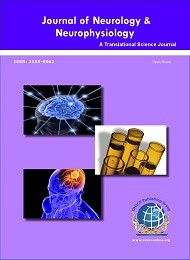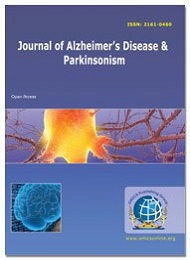Theme:
Neuro Science 2020
Conference Series LLC Ltd is overwhelmed to announce the commencement of “2nd World Congress on Neurology” to be held during December 03-04, 2020 as a Webinar With the theme “Expanding the innovative trends in the field of Neuroscience”.
We honor to invite all the prominent Neurologists, Physiatrists, students and researchers, delegates to participate in this upcoming Neuro Science 2020 event to remark valuable scientific topics and to participate in Neurology Workshops, Neurology Symposiums, Neurology Sessions & contribute to the future innovations in the field of Neuroscience.
List of Topics to be discussed in 2020:
Brain diseases, Addiction, Age Related Changes of Spine, Alzheimer’s Disease and Therapeutics, Animal models in Brain Research, Animal Models in Dementia, Anxiety & Depression, Approaches for, Neural Dynamics, Autism, Autoimmune disorders & Multiple Sclerosis, Behavioral and Functional, Neurology, Behavioral Psychology, Behavioural and Developmental Disorders, Behavioural Neurology, Biofeedback/Neurofeedback, Biomarkers in Neuroimaging, Biomedical Imaging Informatics, Brain and, Neuro Devices, Brain and Neurological Disorders, Brain and Spine Neurosurgery, Brain Degenerative Disorders, Brain Diagnosis, Brain Disease & Failure, Brain Disorders, Brain Disorders & Therapy, Brain Disorders and Injury, Brain Disorders and Therapy, Brain Injury, Brain Tumor, Brain Tumor and Cancer, Brain Tumor and Neuro-oncology, Brain Tumor Diagnosis, Brain Tumors & Neurosurgery , Brain Tumors and Neuro – Oncology, Brainstem Glioma, Case Reports in Neurological Medicine , Central, Nervous System, Central Nervous System Disorders, Cerebral Disorders, Cerebrovascular Disorders, Cerebrovascular Disorders , Choroid Plexus Tumor, Clinical Interventions & Case Reports, Clinical, Neuroimmunology, Clinical Neurology & Neuropsychiatry, Clinical Neurology and Neuro-Nursing, Clinical Neurology and Neuropsychiatry, Clinical Neurophysiology, Clinical Trails & Case Reports, Clinical Trials & Case Reports in CNS, Clinical Trials & Case Reports in Dementia, Clinical Trials and Case Reports, Clinical trials and case studies in Pediatric Neurology, Clinical Trials in Neurology, Cognitive & behavioral neuroscience, Cognitive and Behavioural Neurology, Brain Mapping, Cognitive neuroscience, Cognitive Psychology, Computational & Theoretical Neuroscience, Computational Brain and Neural Engineering, Confocal, Consciousness, Critical Care Neurology, Degenerative Disorders of Spine, Dementia, Dementia Management, Diagnosis and Therapy, Diagnosis of dementia, Diagnosis of Neurocognitive Disorders, Diagnosis of Pediatric Neurology, Drug Development in Dementia, Dual Diagnosis , Electron neuromicroscopy, Electron tomography, Electrophysiology, Epifluorescent, Epilepsy, Euro Neurology, Fluorescence neuromicroscopy, Functional and Structural Neuroimaging, Functional imaging Gangliocytoma, Genomics and Molecular Neuro-Oncology, Geriatric Neurology, Heart and Brain, Light neuromicroscopy, Long-term access implants, Management of Stroke, Medical Treatment of Metastatic, Cancer to the Nervous System, Meningioma, Mental Health: Alzheimer’s and Dementia, Metastatic, Cancer, Mirror Neurons, Molecular Brain Research, Neoplasms, Neural activity implants, Neuro Cardiology & Strokes, Neuro Diagnosis & Imaging techniques, Neuro immune disorders, Neuro Immunology, Neuro Immunology and Neurogenetics, Neuro Oncology, Neuro ophthalmology and Sleep disorders, Neuro paediatrics and Neurorehabilitation, Neuro pharmaceutics, Neuro Pharmacology and, Neuro Toxicology, Neuro physiology & Neuro Pharmacology, Neuro- psychiatry and Mental Health , Neuro Psychology and Neuropsychiatry , Neuro Regeneration & Aging, Neuro therapeutics, Diagnostics and Case Studies, Neuro-biochemical assays, Neurobiology and Pathophysiology of Disorders, Neurocardiology, Neuro-cellular manipulation, Neurochemical Transmission, Neurochemistry, Neurochemistry and Neuropharmacology, Neurochemistry and Neuroscience, Neurocognitive Disorders, Neurodegeneration and Aging, Neurodegeneration and Aging Disorders, Neurodegenerative Diseases, Neurodegenerative Disorders, Neuroendocrine Immunology, Neuroendocrinology, Neuro-functional analysis, Neurogenetic and Neurometabolic Disorders, Neurogenetics, Neurogenetics & Neurometabolic disorders, Neuroimaging, Neuroimaging , Neuroimaging and Radiology, Neuroimaging in Neurological disorders, Neuroimaging in Psychiatry, Neuroimmunological Disorders, Neuroimmunology, Neuroimmunology and Neural Stem Cells (NSCs), Neuroimmunology and Neuroinfections, Neuroimmunology and Neuroinflammation, Neuroimmunology and Neuroinflammation , Neuroimmunology and Neurotransmitters, Neuroinfections & Neuroimmunological disorders, Neuroinfections and Neuroimmunology, Neuroinformatics, Neurological disorders, Neurological Nursing, Neurological Nursing & Clinical Training, Neurologist vs. Neurosurgeon, Neurologists, Neurology and Neuroscience, Neurology Education, Neurology Nursing , Neuro-microscopy, Neuromuscular Disorders, Neuronal Disorders, Neuro-Oncology, Neuro-oncology & CNS, Neuro-Oncology and Brain tumour,, Neuro-Oncology and Pregnancy, Neuro-Oncology and Vision Science, Neuro-Oncology Biomarkers, Neuro-Oncology Cognition Measurement and Treatment, Neuro-Ophthalmology, Neuropathology, Neuropathology and Neuroradiology, Neuropharmaceutics, Neuropharmacology, Neurophysiology, Neurophysiology and Neurodegeneration, Neuroplasticity & Neurorehabilitation, Neuroplasticity and, Blood Brain Barrier, Neuroprotection, Neuro-proteomic analysis, Neuropsychiatric Disorders,, Neuropsychiatry, Neuroradiology, Neuroradiology, Neurostimulation, Glutamate Neurotransmission and Neuroimaging in Cognitive Neuroscience, Neurosurgery, Neurosurgery and Nursing spine surgery, Neurotherapeutics, Neurology, Neurotransmitters, Neurotransmitters and Neuroimmune Interactions, Non-operative Treatment for Spinal Disabilities, Non-pharmacological Management, Novel Neurotherapeutics, Diagnostics & Case Studies, Novel Therapeutic Strategies, Novel Therapeutics, Novel Therapies in Neuro-Oncology, Nursing and Neuroscience, Nursing care in Dementia, Nursing Education and Research, Outcome Assessment in Spinal Surgery, Para Neoplastic Neurological Syndrome, Parkinson’s Disease, Parkinson’s Disease and Movement Disorders, Pathogenesis of Cognitive disorders, Pathways of Spinal Pain, Pediatric Neonatal surgery, Pediatric Neurogenetics and Neurodegenerative Disorders, Pediatric Neuroimaging, Pediatric Neuro-immunology Disorders, Pediatric Neurology, Pediatric Neuromuscular Disorders, Pediatric Neuro-Oncology, Pediatric neurosurgery, Pediatric Nursing and Care, Pediatric oncological (childhood cancer) surgery, Pediatric Orthopedic surgery, Pediatric Pharmacology and Drug therapy, Pediatric plastic and reconstructive surgery, Pediatric Psychological Disorders and Neuropsychiatric Disorders, Pediatric Stroke and Recovery, Pediatric Transplant Surgery, Pediatric urological surgery, Pediatrics and Geriatrics Neuro-Oncology, Perspective in Neuroscience and Neurology, Postoperative Complications, Postoperative Rehabilitation, Prevention and Control of Neurological disorders, Psychiatry and Addiction, Psychiatry and Psychology, Psycho-Oncology and Psychosocial Advances, Radiation Technology in Neuroscience, Radiation Toxicity and Patient Safety, Radio Immunotherapy, Rapid Growing Neuroimaging and Interventional Radiology, Recent Advancement in Treatments of Dementia, Risk Assessment and Prevention of Stroke, Scanning electron, Schizophrenia, Sleep Disorders and Medicine, Spinal Deformities and Malformations, Spinal Disorders, Spinal Fractures and Injuries, Spinal Instrumentation, Spinal Tumors and Inflammation, Spine, Spinal Disorders, Spinal Stenosis, Spine, Biomechanics, Spine in Sports, Spine Radiology and Imaging, Spine Surgery, Spine Surgery , Spine, Surgery & Spinal Disorders, Stem Cell for Neurological Disorders, Stereotaxic surgeries, Stroke, Stroke & Neurological Disorders, Stroke and its Management, Stroke and Mental Health, Stroke and Neurological Disorders, Stroke Nursing and Interventions, Stroke Rehabilitation & Recovery, Stroke Rehabilitation and Brain Hemorrhage, Structural imaging, Surgical Neurology and Neuro-Oncology, The Brain and Spine, Therapeutics approaches of Neurological Disorders, Transmission electron, Transparent Animal Model for Neuroimaging, Treatment of Cancer Related Complications, Two-photon, Vascular Dementia, Whole Brain Imaging.
Neuroscience is Associate in nursing knowledge domain science and it's historically been classified as a subdivision of biology. That works closely with different disciplines, like science, chemistry, philosophy, psychology, etc.., The brain is to blame for our thoughts, mood, emotions and intelligence, in addition as our physical movement, breathing, heart rate, etc..,
Neuroscientists study the systema nervosum on many various levels. They examine molecules, nerve cells, nerve networks, and brain structure, singly and conjointly.
The average adult brain weights around 1.4 kilo and consists of 4 primary parts:
- Cerebrum
- Cerebellum
- Limbic System
- Brain Stem
Neurology is that the branch of drugs involved with the study and treatment of disorders of the systema nervosum. A doctor who makes a speciality of neurology is termed a specialist. The specialist treats disorders that have an effect on the brain, neural structure, and nerves. Neurologists aren't surgeons. Those that perform surgery area unit referred to as neurosurgeons and that they bear a surgical, instead of general medicine, residency. Neurological disorders area unit disorders that have an effect on the central systema nervosum (brain, brain stem and cerebellum), the peripheral systema nervosum (peripheral nerves - nerves included), or the elements of that area unit situated in each central and peripheral systema nervosum.
In this field, scientists investigate the central and peripheral nervous systems at the level of whole organs, cellular networks, single cells, or even subcellular compartments. Neurophysiology includes study of the electrical properties of the nerve cell membrane, the generation of action potentials that carry information, and the communication of this information between cells over the synaptic space.
Track 4: Cognitive Neuroscience
Cognitive neuroscience is the field of study focusing on the neural substrates of mental processes. It is at the intersection of psychology and neuroscience, but also overlaps with physiological psychology, cognitive psychology and neuro-psychology. It also explores how individual neurons operate and communicate to form complex neuronal architectures that comprise the human brain. Essentially the sector of neuroscience slowly came into being wherever folks began to check the idea within the behavior of individual neurons and systems of neurons inside the brain, of our own actual behavior, thoughts, and psychological feature.
Neurogenetics could be a branch of genetic science that analyzes the impact of genes on the structure and performance of the brain and peripheral system. It considers neural characteristics as phenotypes and is especially supported the observation that the nervous systems of people, even of these happiness to an equivalent species, might not be identical. A wide range of diseases and disorders are determined by Neurogenetics and these conditions can have substantial impacts on an individual’s quality of life, behaviour and personality.
Brain disorders are usually referred to as the hidden incapacity as a result of there will be serious issues with our behaviour and talent to suppose, and nonetheless there's usually no visible phase change with several brain disorders therefore issues will be simply neglected or misunderstood. Brain is your body’s center. It’s part of the nervous system, which also includes the spinal cord and a large network of nerves and neurons. When your brain is damaged, it can affect in many different forms like Infections, trauma, stroke, seizures, and tumors are some of the major categories of brain diseases and effects will be different for each person.
- Alzheimer’s Disease
- Dementia
- Brain Cancer
- Epilepsy and Other Seizure Disorders
- Mental Disorders, etc..,
Track 7: Neurological Disorders
Neurological disorder applies to any condition that's caused by a dysfunction partly of the brain or systema nervosum, leading to physical and/or psychological symptoms. Many medical specialty disorders area unit “congenital,” which means they were gift at birth. However a number of the disorders area unit “acquired,” that signifies that they developed once birth. Those with an unknown cause area unit termed “idiopathic.”
Neurologic Disorders:
- Poor or weaker judgment
- Personality changes; changing into irritable, fearful, suspicious, inappropriate
- Sudden weakness, symptom or vision loss
- Tremor, shakiness
- Difficulty walking as a result of shuffling steps or poor balance
- Loss of awareness or convulsions, etc..,
Track 8: Central nervous system
The central system consists of the brain. The brain plays a central role within the management of most bodily functions, as well as awareness, movements, sensations, thoughts, speech, and memory. Some reflex movements will occur via spinal cord pathways while not the participation of brain structures. It’s differentiated from the peripheral system0 that involves all of the nerves outside of the brain and spinal cord that carry messages to the central system. Each brain and therefore the spinal cord area unit protected by 3 layers of membranes called tissue layer. For more protection, the brain is cased inside the arduous bones of the skull, whereas the spinal cord is protected with the bony vertebrae of our backbones. A 3rd variety of protection is spinal fluid that provides a buffer that limits impact between the brain and skull or between spinal cord and vertebrae.
A spinal tumour is an abnormal mass of tissue inside or encompassing the spinal cord and/or spine. These cells grow and multiply uncontrollably, ostensibly uncurbed by the mechanisms that management traditional cell. Tumors will grow on the spinal cord, even as they will in alternative elements of your body, like the lungs or liver. They will be harmful to you as a result of they will move on and harm the spinal cord. Spinal cord tumors have an effect on many various areas and are available in many various varieties, including:
- Leukemia or cancer (cancers of the blood)
- Myeloma (cancer of the bone marrow)
- Medulloblastomas (which begin within the brain and metastasise to the spine, and area unit most typical in children)
- Chordomas (which type within the spine and may push against it)
- Schwannomas (which begin within the peripheral nerves)
- Meningiomas (which begin within the tissues round the spinal cord)
- Pathologic process (secondary) tumors (which area unit cancers that have unfold from the respiratory organ, breast, prostate, or alternative organs).
Neuropathology is that the study of unwellness of system tissue, sometimes within the variety of either little surgical biopsies or whole-body autopsies. Neuropathologists sometimes add a department of anatomic pathology; however work closely with the clinical disciplines of neurology, and operation, which frequently rely upon neuropathology for a designation. Neuropathology is that the study of diseases of the eyes and of the system, which incorporates the: Brain, Spinal twine and Body's in depth nerve network
Diseases touching the system will cause:
- Weakness
- Pain
- Seizures
- Vision loss
- Problems with thinking or behavior
Neurosurgery may be an extremely specialized medical field targeted on operation of disorders of the brain and spine. A surgeon may be a MD World Health Organization makes a speciality of the designation and operation of disorders of the central and peripheral spinal cord together with innate anomalies, trauma, tumors, vascular disorders, infections of the brain or spine, stroke, or chronic diseases of the spine. Neurosurgeons these days will operate employing a magnifier to envision the tiniest of brain and spine structures. A neural structure surgeon will perform small surgical operation to correct vascular disorders like aneurysms.
Track 12: Psychology and Psychiatry
Psychiatry is that the branch of drugs targeted on the diagnosing, treatment and interference of mental, emotional and activity disorders. A shrink could be a medical doctor UN agency makes a speciality of psychological state, together with substance use disorders. Psychiatrist’s area unit qualified to assess each the mental and physical aspects of psychological issues.
The 3 main variations between psychiatrists and psychologists are:
- Psychiatrists area unit medical doctors, psychologists don't seem to be
- Psychiatrists bring down medication, psychologists cannot
- Psychiatrists diagnose health problem, manage treatment and supply a variety of therapies for advanced and heavy mental disease. Psychologists specialize in providing psychotherapy to assist patients
Epilepsy could be a chronic disorder that causes wanton, repeated seizures. A seizure could be an abrupt rush of electrical activity within the brain. There are 2 main forms of seizures. Generalized seizures have an effect on the entire brain. Focal or partial seizures have an effect on only 1 a part of the brain. A light seizure could also be tough to acknowledge. It will last many seconds throughout that you lack awareness. Brain disorder could be a fairly common neurological disease that affects sixty five million folks round the world. It affects concerning three million folks. Anyone will develop brain disorder; however it’s a lot of common in young kids and older adults. It happens slightly a lot of in males than in females.
Track 14: Neuroimaging and Radiology
Neuroimaging or brain imaging is that the employment of various techniques to either directly or indirectly image the structure, function, or medical specialty of the system. It is a relatively new discipline within medicine, biology, and science. Physicians administrative unit focus on the performance and interpretation of neuroimaging at intervals the clinical setting unit neuroradiologists.
- Anatomical Imaging
- Fusion Imaging
- Functional and Structural Neuroimaging
- Diffusion male person & Kurtosis imaging
- Single-Photon Emission computed axial imaging
- Stereotactic Radiosurgery
- Palliative irradiation in Neuro medicine
- Interventional Radiology
- Interventional Radiology
As a branch of medication, gerontology thinks about with diagnosis and treating diseases that occur in adults, usually over age sixty. A set of this, geriatric neurology focuses on medicine disorders common to the current people. Older patients usually gift with overlapping issues from numerous disorders, the results of natural ageing are often tough to disentangle from clinical conditions, and blurry syndromes square measure common.
Swelling or inflammation is a component of the body's natural response to injury. Puffiness refers to swelling because of cornered fluid, and it will happen anyplace within the body. This fluid will increase the pressure within the bone a lot of ordinarily said as intracranial pressure (ICP). Exaggerated ICP will scale back brain blood flow and reduce the atomic number 8 your brain receives.
Symptoms:
- Headache
- Dizziness
- Nausea
- Lack of coordination
- Numbness, etc..,
Multiple sclerosis (MS) is a chronic illness involving your central nervous system (CNS). It can affect your brain, spinal cord, and the optic nerves in your eyes. It happens once your system attacks a fatty material referred to as fat, which wraps around your nerve fibers to shield them. Without this outer shell, your nerves become damaged.
Symptoms:
- Fatigue
- Thinking Problems
- Vision Problems
- Optic Neuritis
- Depression
- Pain
Track 18: Brain Tumor and Brain Injury
A brain tumor is abnormal cells in the tissues of the brain. Primary brain tumors can be either malignant which contain cancer cells or benign which do not contain cancer cells. If a cancerous tumor starts elsewhere in the body, it can spread cancer cells, which grow in the brain.
- Brain tumors can occur at any age
- Researchers and doctors don't grasp actual reason behind brain tumors
- Risk factors embody exposure to radiation and case history of brain tumors
Brain injury refers to the occurrence of an insult to the brain which causes damage. Because every injury damages a special a part of the brain. It can happen at birth or may arise later from trauma or an illness. All traumatic brain injuries are head injuries. But head injury is not necessarily brain injury. There are two types of brain injury traumatic brain injury which is caused by an external force and acquired brain injury which occurs at the cellular level.
Neurodegeneration refers to the progressive atrophy and loss of function of neurons. It is a feature of many debilitating, incurable diseases that are rapidly rising in prevalence and there is an urgent need to develop new and more effective therapeutic strategies to combat these devastating diseases. This causes problems with movement which is called as ataxias or mental functioning which is called as dementias. Degenerative nerve diseases can be serious or life-threatening. It depends on the type. Most of them have no cure. It includes:
- Amyotrophic lateral sclerosis
- Friedreich's ataxia
- Huntington's disease
- Lewy body disease
- Parkinson's disease
- Spinal muscular atrophy
Dementia may be a syndrome caused by neuron death. Neurodegenerative disease is behind most dementias. The word dementedness describes a group of symptoms that will embrace cognitive state and difficulties with thinking, problem-solving or language. Dementia is caused once the brain is broken by diseases, such as Alzheimer's disease or a series of strokes. Alzheimer's disease is that the commonest reason for insanity however not all insanity is because of presenile dementia.
The problems Associate in nursing consequences of illicit drug use and excessive alcohol use square measure an apparently universal and chronic supply of concern for the media and public. Within addiction medicine you may work with people WHO have a spread of addictions also as, commonly, mental disease. It is a medical subspecialty inside medicine that focuses on the analysis, diagnosis, and treatment of individuals WHO square measure tormented by one or additional disorders associated with addiction. This may embrace disorders involving legal and dirty medication, gambling, sex, food, and alternative impulse management disorders.
Emotional upbeat incorporates our overenthusiastic, mental, and social prosperity. It influences how we think, feel, and act. It regulates however we tend to handle pressure, establish with others, and settle on decisions. Emotional well-being is vital at every section of life, from youth and state through adulthood.
Through an out of this world span, on the off probability that you simply expertise psychological well-being problems, your reasoning, state of mind, and conduct may well be influenced. Numerous components add to emotional wellness issues
Anxiety issue is a genuine psychological instability. Nervousness issue square measure the foremost well known of evangelistic issue and influence in way over twenty five million Americans. Numerous structures and side effects may incorporate overpowering sentiments of frenzy and dread, wild fanatical musings, Painful, nosy recollections, repeating bad dreams and physical side effects, for example, feeling wiped out to your stomach, "butterflies" in your stomach, heart beating, startling effortlessly, and muscle pressure. Kinds of nervousness issue square measure freeze issue and fears.
Alzheimer’s disease is a neurological cerebrum issue and it is the most widely recognized type of dementia. Alzheimer's has no current cure, however treatments for symptoms are on the market and analysis continues. Although current dementia treatments cannot stop from progressing, they'll briefly slow the worsening of insanity symptoms and improve quality of life for those with dementia treatment and their caregivers. Dementia is not a specific disease. It's associate degree overall term that describes a gaggle of symptoms related to a decline in memory or alternative thinking skills severe enough to scale back a personality's ability to perform everyday activities.
The hyperbolic government funding in neurology analysis Associate in nursing an ever-growing demand for analysis targeted on drug discovery for development of novel therapies in medicine disorders square measure driving the expansion of neurology market.
The global marketplace for psychotic sickness is anticipated to grow at a slow rate throughout the forecast amount. The slow rate is attributed primarily to the loss of patent exclusivity of branded medicine and therefore the emergence of generic medicine.
Manufacturers of branded medicine square measure probably to expertise a decline in sales revenue thanks to the penetration of low-priced generic medicine within the market, which is likely to impact the growth of the market for antipsychotic drugs.
Study Coverage
The scope of this report is broad and covers therapeutics used in the treatment of neurological disorders.
The report highlights the present and future market potential of neurology medicines and provides a close analysis of the competitive setting, regulations, epidemiology of neurological diseases, merger and acquisition, drivers, restraints, and pipeline drugs in the market.
Brain Health Devices Market
Brain Health devices are utilized as a part of the treatment of neurological disorders, for example, Alzheimer infection and different dementia, epilepsy, cerebrovascular diseases, including stroke, headache, and another migraine issue, Parkinson's sickness, multiple sclerosis, neuroinfections, mind tumors, horrible disarranges of the sensory system because of head injury and neurological issue because of ailing health. Neurological scatters may likewise happen because of different contaminations, for example, viral disease (Zika infection), bacterial disease (Neisseria meningitides), and parasitic contamination (Cryptococcus). As per the World Health Organization (WHO), in 2016, around 450 a great many individuals were influenced by neurological scatters over the world. Around 50 million individuals were accounted for to experience the ill effects of epilepsy over the globe and more than 6 million individuals kick the bucket because of a stroke every year. Brain health devices, for example, CT filter, MRI, EEG, MEG, Transcranial Doppler (TCD) gadgets are generally used to screen mind movement.
Rising commonness of Alzheimer's Ailment is relied upon to support market development
The central point adding to the development of the brain health devices market is the rising number of Alzheimer's cases. For example, According to the Alzheimer's Association, in 2017, more than 5 million individuals are assessed to experience the ill effects of Alzheimer's malady, which is likewise answered to be the 6th driving reason for death in the U.S. Besides, developing geriatric populace, rising number of horrendous mind damage cases, and uncontrolled headways in innovation, for example, brain biomarkers, quality treatment, undifferentiated cell treatment and keen cerebrum prosthetics are adding to development of the cerebrum wellbeing gadgets showcase. Moreover, finding and treatment neurodegenerative disorders through the microbiome and neuroimaging methods additionally enlarge showcase development. Notwithstanding, high expenses of these gadgets are in charge of impending business sector development.

The report includes:
- Analyses of the global market trends, with data from 2019, estimates for 2020, and projections of compound annual growth rates (CAGRs) through 2024
- Historical background on neurological disorders and therapeutics, growing prevalence of neurological disorders, increasing research and development activities regarding neurology research, and analysis of the factors influencing the market
- Quantitative analysis of the neurology therapeutics market covering Parkinson Diseases, Alzheimer Diseases, Psychotic Disorders, Epileptic Disorders, Autism Disorders, and Brain Tumor Diseases
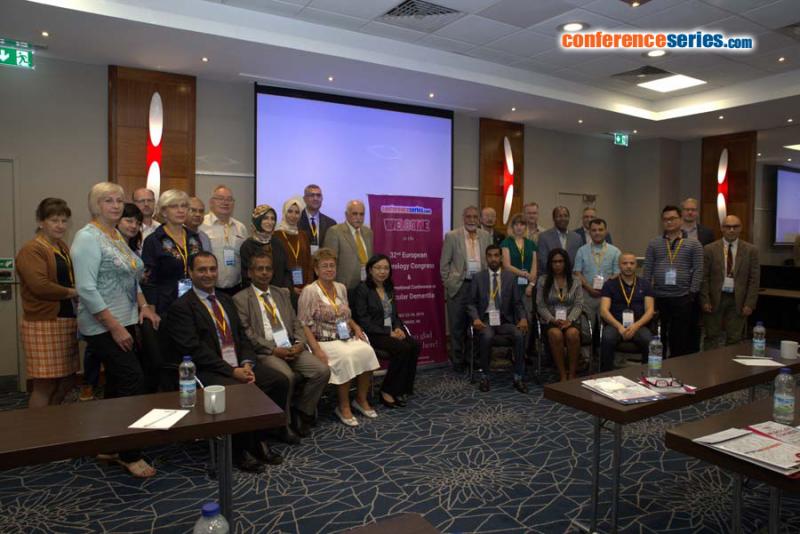
Reasons for Doing this Study
Global neurology market comprises of various therapeutics used for the treatment of different neurological disorders. The biopharmaceutical companies are investing significantly in the development of innovative therapeutics for the treatment of neurological disorders. Government organizations square measure funding analysis and development activities associated with neurology analysis. These factors are impacting the neurology market positively coupled with the growing prevalence of neurological disorders.
New approaches for the treatment of neurology related indications were pursued by pharmaceutical companies. This new drug with a completely unique mechanism of action or improved delivery system can offer a robust new choice to presently prescribed neurology medicines.
The global neurology market is growing thanks to an increase within the aging population, growing awareness relating to mental and neurologic sickness, increasing insurance reforms and constant analysis and development in neurology by pharmaceutical companies.

Conference Highlights
- Neuroscience
- Neurology
- Neurophysiology
- Cognitive Neuroscience
- Neurogenetics
- Brain Disorders
- Neurological Disorders
- Central nervous system
- Spinal Cord Tumor
- Neuropathology
- Neurosurgery
- Psychology and Psychiatry
- Epilepsy
- Neuroimaging and Radiology
- Geriatric Neurology
- Cerebral Edema
- Multiple Sclerosis
- Brain Tumor and Brain Injury
- Neurodegeneration
- Dementia
- Addiction
- Mental Health
- Anxiety
- Alzheimer’s disease
To share your views and research, please click here to register for the Conference.
To Collaborate Scientific Professionals around the World
| Conference Date | December 03-04, 2020 | ||
| Sponsors & Exhibitors |
|
||
| Speaker Opportunity Closed | |||
| Poster Opportunity Closed | Click Here to View | ||
Useful Links
Special Issues
All accepted abstracts will be published in respective Our International Journals.
- Journal of Neurological Disorders
- Journal of Neurology & Neurophysiology
- International Journal of Neurorehabilitation
Abstracts will be provided with Digital Object Identifier by







